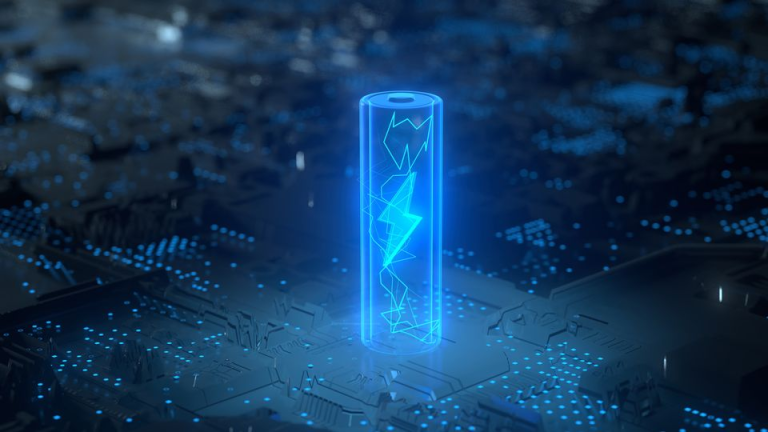Introduction
As the demand for efficient and sustainable energy storage solutions continues to rise, lithium-sulfur (Li-S) batteries have emerged as a promising alternative to conventional lithium-ion batteries. With the potential for significantly higher energy density and reduced environmental impact, lithium-sulfur batteries are being explored for a range of applications, from electric vehicles to grid energy storage. This article delves into the advantages, challenges, and future prospects of lithium-sulfur batteries.

Advantages of Lithium-Sulfur Batteries
- Higher Energy Density
One of the most significant advantages of lithium-sulfur batteries is their potential for high energy density. While traditional lithium-ion batteries typically offer energy densities around 150-250 Wh/kg, lithium-sulfur batteries can theoretically achieve energy densities of up to 600 Wh/kg. This increased energy storage capacity is primarily due to the high theoretical capacity of sulfur, which can store more lithium ions during the charging process.
- Lightweight Materials
Sulfur is a lightweight material, making it an attractive choice for battery applications where weight is a critical factor, such as in electric vehicles and portable electronics. The use of sulfur in battery chemistry can lead to lighter batteries without sacrificing performance, further enhancing energy efficiency.
- Environmental Sustainability
Lithium-sulfur batteries have a lower environmental impact compared to conventional lithium-ion batteries. Sulfur is abundant and non-toxic, unlike cobalt and nickel, which are commonly used in lithium-ion batteries and are associated with environmental and ethical concerns regarding mining practices. This makes lithium-sulfur batteries a more sustainable choice for the future.
Challenges of Lithium-Sulfur Batteries
Despite their promising advantages, lithium-sulfur batteries face several challenges that need to be addressed before widespread adoption:
- Limited Cycle Life
One of the primary drawbacks of lithium-sulfur batteries is their relatively short cycle life. During charging and discharging cycles, the polysulfides formed can dissolve in the electrolyte, leading to loss of active material and capacity fading. This phenomenon, known as “shuttling,” can significantly reduce the battery’s lifespan.
- Poor Electrical Conductivity
Sulfur has inherently low electrical conductivity, which can hinder the overall performance of the battery. To address this issue, researchers are exploring various conductive additives and composite materials to enhance conductivity and improve battery efficiency.
- Complex Manufacturing Processes
The production of lithium-sulfur batteries can be more complex than that of conventional lithium-ion batteries. Developing scalable manufacturing processes that maintain performance while controlling costs remains a challenge for researchers and manufacturers.
Recent Advances in Lithium-Sulfur Battery Technology
To overcome the challenges facing lithium-sulfur batteries, researchers are making significant strides in various areas:
- Advanced Electrode Designs
Innovative electrode designs, such as the use of carbon-based materials to create conductive networks within the sulfur cathode, are being explored. These networks can enhance electrical conductivity and mitigate the dissolution of polysulfides, ultimately improving cycle life.
- Improved Electrolyte Formulations
Developing new electrolyte formulations that can stabilize polysulfides and enhance their solubility is critical. Researchers are experimenting with solid-state electrolytes and hybrid electrolytes to reduce shuttling effects and improve overall battery performance.
- Nanostructured Materials
Nanotechnology is playing a crucial role in advancing lithium-sulfur battery performance. By using nanostructured materials for both the cathode and anode, researchers aim to enhance surface area, improve reaction kinetics, and reduce the distance lithium ions must travel during charging and discharging cycles.
Future Prospects
The future of lithium-sulfur batteries is promising, with ongoing research and development focusing on overcoming existing challenges. As advancements continue, several potential applications could benefit from the unique properties of lithium-sulfur batteries:
- Electric Vehicles (EVs): With their high energy density, lithium-sulfur batteries could significantly extend the range of electric vehicles, addressing one of the major concerns of potential EV buyers.
- Grid Energy Storage: Lithium-sulfur batteries can be utilized for grid energy storage, supporting the integration of renewable energy sources like solar and wind. Their lightweight nature and cost-effectiveness make them suitable for large-scale energy storage solutions.
- Portable Electronics: The potential for lighter batteries with higher capacities positions lithium-sulfur technology as a game-changer in the portable electronics market, enabling longer-lasting devices.
Conclusion
Lithium-sulfur batteries represent a revolutionary shift in energy storage technology, offering the potential for higher energy density, reduced environmental impact, and lighter weight compared to traditional lithium-ion batteries. While challenges remain, ongoing research and technological advancements are paving the way for their future adoption across various applications.
As the demand for efficient and sustainable energy solutions continues to grow, lithium-sulfur batteries could play a pivotal role in shaping the future of energy storage, driving innovation in electric vehicles, portable electronics, and renewable energy integration. With continued investment and development, the potential of lithium-sulfur technology may soon become a reality, transforming the landscape of energy storage.

